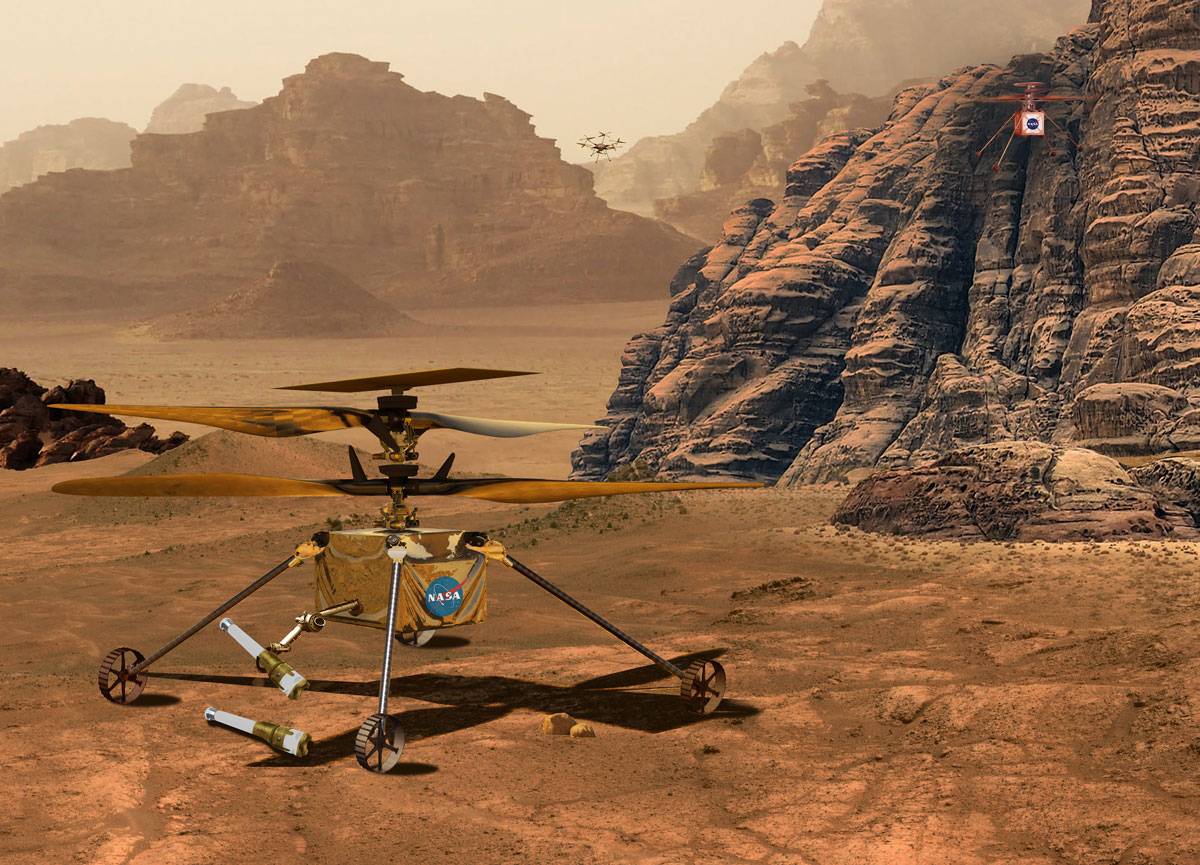5 min read

A Perspective from Bob Balaram, Chief Engineer "Emeritus" Ingenuity Project
Bob Balaram is the originator of NASA’s Ingenuity Mars helicopter and served as its Chief Engineer through the entire formulation, design, development and test phases. He oversaw the assembly of this first-of-a-kind aircraft and integration onto the Perseverance rover, and shepherded Ingenuity through its first year of operations on Mars, spanning both a month-long Technology Demonstration and a subsequent Operations Demonstration.
Eighteen months ago, on April 19th, 2021, on a cold spring day on Mars, Ingenuity took to the Martian skies for the first ever controlled flight of an aircraft on another planet. It was very much like another day in December 1903, here on Earth. On Mars, it was our Wright Brothers moment - a short flight - rising a few meters into the sky, hovering briefly in the thin air, making a turn, and descending to land. A simple flight, but one that ushered in aerial mobility for exploring Mars.
Since then Ingenuity has racked up many accomplishments. This aircraft, very much also a spacecraft, has been on its own on the surface of Mars, detached from its traveling companion Perseverance, for over 500 Martian days or sols. It has operated way beyond its original planned mission of 30 sols, including surviving a brutal winter that it was not designed for. With 33 flights, almost an hour of flight time, over 7 km of travel in Jezero crater, takeoffs and landings from 25 airfields, almost 4000 navigation camera images, and 200 high-resolution color images, it has proven its worth as a scout for both scientists and rover planners. Currently, it is getting ready to use its fourth software update - this one with advanced navigation capabilities that will allow it to safely fly up the steep terrain of the Jezero river delta, scouting ahead of the rover Perseverance as it searches for signs of past life on Mars.
Ingenuity's success has led to NASA's decision to take two Ingenuity class helicopters on the Mars Sample Retrieval Lander scheduled for later in this decade. These Sample Recovery Helicopters, with wheels instead of feet, and a small manipulator arm with a two-fingered gripper, will, if needed, carry precious sample tubes from a sample cache depot back to the Mars ascent vehicle for launch back to Earth. A more capable Mars Science Helicopter with the ability to carry almost 5 kg of science payloads is also in early conceptual and design stages.
All planetary exploration appears to unfold as an initial phase of scouting, followed by targeted science, and if the future unfolds as we hope on Mars, perhaps human exploration. Mars helicopters bring to this endeavor the 4R's - Reach, Range, Resolution, and Robotics.
Mars helicopters are unique in their ability to reach locations that are otherwise inaccessible to other forms of mobility. They can fly over terrain that is simply not traversable by a wheeled rover as shown by Ingenuity's flight over the treacherous sand dune fields of the Seitah region in Jezero crater. Helicopters can get up close and hover next to terrain features such as crater walls and enter subsurface features such as lava tube skyholes. Because of their low weight, entry capsules carrying a helicopter can be targeted to even the highlands of Mars, with the helicopters flying out the final leg of the entry, descent, and landing journey. For the first time we can have true global access to the red planet.
Aerial vehicles also have tremendous range. While Ingenuity as a technology demonstration was limited to a flight capability of about 1 km per sol, future larger helicopters could have the endurance to allow 10's of km per sol traverses. With that kind of capability, large scale, close-up exploration of a wide area on Mars becomes possible. Whether it is a thorough exploration of the polar ice caps on Mars or an epic journey along the Grand Canyon of Valles Marineris, Mars helicopters can make these journeys a reality.
A third feature is resolution. Mars has been observed globally from orbit and at higher resolution from rovers and landers in a few locations. Mars helicopters could provide a planet-wide high-resolution observation capability, able to carry a variety of cameras and science instruments, and observing features at the finest level of detail from a distance of a few meters to even as close as a few centimeters.
A fourth element, latent in its initial form on the upcoming Sample Recovery Helicopters, is a true robotics capability. High performance processors enabling autonomy, unprecedented mobility through both flying and driving, and a true manipulation capability with a robot hand, can enable much more than sample tube retrieval. Multiple small payloads can be carried by these types of helicopters, deployed and re-deployed to various locations, to perform a variety of distributed and networked operations - leading to new ways of doing science and technology demonstrations on Mars and facilitating eventual human exploration.
Mars exploration is still in its early phases, and it's not just about science. Much as Lewis and Clark were tasked to explore and map the newly acquired American territories, establish a presence, and as a secondary objective perform science and economic assessments, Ingenuity and its descendants can further the cause of science and exploration. There is still much to be learned at Mars. A fleet of rovers and helicopters, scouts and science craft, operated from Earth and early human outposts on the surface and in orbit, can indeed be in our future.
Written by Bob Balaram, Chief Engineer "Emeritus" Ingenuity Project







